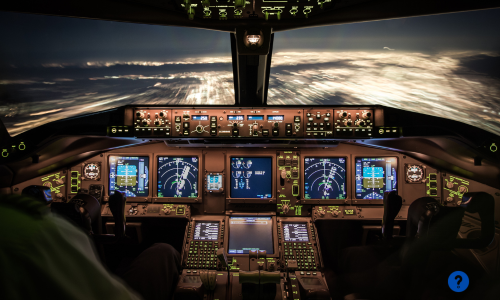Flying an airplane, whether for personal use or business, involves a variety of costs that go beyond just the initial purchase of the aircraft. These expenses include fuel, maintenance, insurance, hangar fees, and other operating costs that can vary depending on the type of aircraft and how often it’s flown. In this post, we’ll break down the major factors that influence the cost of flying an airplane and provide an estimate of typical expenses for different types of planes.
Key Factors That Affect the Cost of Flying an Airplane
- Type of Aircraft
- The type of plane you fly has a significant impact on your costs. For example, flying a single-engine propeller plane will be much cheaper than flying a jet or multi-engine aircraft.
- Fuel Costs
- The price of aviation fuel is one of the largest ongoing expenses for airplane owners and pilots. Fuel consumption depends on the type of aircraft and the duration of the flight.
- Maintenance and Repairs
- Regular maintenance is mandatory to ensure safety and compliance with regulations. Larger, more complex aircraft require more expensive maintenance.
- Insurance
- Aircraft insurance is essential and varies depending on the type of aircraft, how it’s used (e.g., personal vs. commercial), and the experience level of the pilot.
- Hangar or Tie-Down Fees
- Aircraft need to be stored either in a hangar or tied down on the tarmac. Hangar space can be more expensive, especially in busy airports or urban areas.
- Miscellaneous Costs
- Additional costs include landing fees at airports, navigation charts, pilot training, and any required licensing or certifications.
Average Costs by Aircraft Type
Here’s a breakdown of estimated costs for flying different types of airplanes, based on general aviation and private planes. These estimates include fuel, maintenance, and insurance.
Breakdown of Common Costs
- Fuel Costs
- Fuel consumption is one of the most variable factors, heavily influenced by the type of aircraft and flight conditions. For example:
- A single-engine propeller plane like a Cessna 172 burns around 8-10 gallons of fuel per hour, with aviation fuel averaging around $6 per gallon in the U.S.
- A light jet like the Cessna Citation Mustang consumes roughly 80-100 gallons per hour, leading to much higher fuel costs.
- Fuel consumption is one of the most variable factors, heavily influenced by the type of aircraft and flight conditions. For example:
- Maintenance and Repairs
- Routine maintenance is essential for safe operation and to meet FAA regulations. Annual inspections for smaller planes typically range from $1,500 to $3,000, while jets and twin-engine planes can see maintenance costs exceeding $20,000 per year. Major repairs, such as engine overhauls, can be significant—often costing tens of thousands of dollars depending on the aircraft.
- Insurance
- Insurance costs depend on several factors, including the type of aircraft, its value, and the pilot’s experience. For smaller single-engine planes, insurance might cost between $1,000 and $2,000 annually, while insuring a private jet can easily exceed $20,000 per year.
- Hangar and Tie-Down Fees
- Storing your aircraft safely is another recurring expense. Hangar space offers protection from weather and is usually more expensive than outdoor tie-downs. Costs range from $200 to $500 per month for single-engine planes and can climb to $1,000 or more for jets, depending on location and airport size.
- Miscellaneous Costs
- Landing Fees: Airports, particularly larger ones, may charge landing fees, which can range from $10 to several hundred dollars depending on the airport and aircraft size.
- Licensing and Certifications: Keeping licenses up to date and completing recurrent training are additional costs to factor in, especially for commercial or complex aircraft operations.
Flying vs. Owning: Renting or Leasing Options
For those who don’t fly frequently, renting an airplane might be more cost-effective than ownership. For example:
- Rental Costs:
- Single-engine planes like a Cessna 172 typically rent for $100 – $150 per hour, including fuel.
- Light twin-engine planes may rent for $200 – $400 per hour.
- Small jets can be chartered for $2,000 – $5,000 per flight hour.
Renting or joining a flight club is a way to access planes without the significant upfront investment or the responsibility of maintenance, insurance, and storage.
How Costs Have Changed Over Time
The cost of flying an airplane has fluctuated over the years due to rising fuel prices, increased regulatory requirements, and inflation. While advancements in aircraft technology have improved fuel efficiency and safety, these benefits are often offset by increasing maintenance complexity and higher insurance premiums. Additionally, fluctuating fuel prices have a significant impact on overall operating costs, particularly for jets and larger aircraft.
Conclusion
Flying an airplane involves a wide range of costs, including fuel, maintenance, insurance, and storage. On average, the cost to operate a small single-engine plane can range from $100 to $200 per flight hour, while the cost for a light twin-engine plane is between $200 and $400 per hour. For those flying private jets, the hourly cost can reach $1,200 to $2,500 or more.
Whether you own, rent, or lease, it’s essential to consider both the fixed and variable costs involved in flying to make an informed decision. If you don’t fly frequently, renting or chartering may be more cost-effective, while owning can provide more convenience and long-term value for regular pilots.




